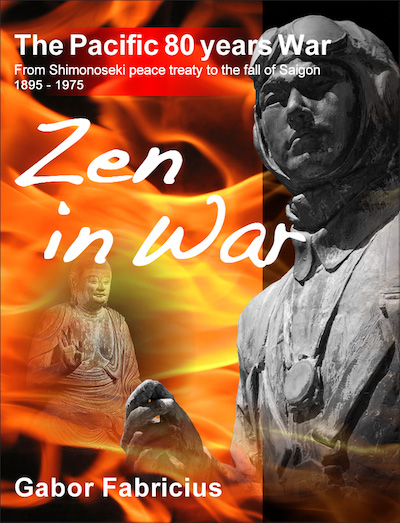
Zen in War
by Gábor Fabricius
Zen in War
by Gábor Fabricius

The first casualty in any armed conflict is the truth, so in my book I have tried to avoid branding like aggressor, war criminal, savage, fanatic, fascistic, militaristic and imperialistic. I have tried to understand how and why a historically relatively peaceful (having not been at war for almost 300 years since 1603), progressive Japan, with no allies, (Germany actually being the ally of nationalist China,) ended up in one of history's bloodiest conflicts with such overwhelming, superior combined adversaries as USA, UK, Canada, Australia and China, later additionally the USSR.
Nevertheless it is now a matter of historical record that once the conflict between Japan and China escalated into a full fledged, total war with the USA and UK, the Japanese did not pull their punches and displayed a modern naval/aerial military excellence that forever put the western-christian superiority legend to rest. This later inspired other Asian and African nations to armed resistance against all forms of colonialism and foreign domination.
About the Book: Zen in War

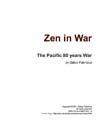
Usually a hundred years has to pass, before historic conflicts, wars and events can emerge and be analysed free of tainted and biased political and religious interests, as well as glorification of the victorious and demonization of the defeated.
The Pacific war is no exception, and until recently most historical works about the conflict have been obviously one sided, branding Japan as the sole aggressor and all other parties as victims.
But that is no way to write history.
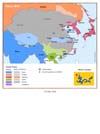

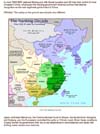
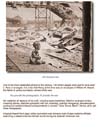
These commonly accepted, comfortably shallow victory-addicted historians, having published thousands of books and articles on the Pacific War, often ignore the fact that war is a mere continuation of politics by other means (Clausewitz), and that both Japan and America only pursued their state policy; this resulted in that many large and small events led to the spectacular military confrontation between the two major Pacific powers ending in a total restructuring and transformation of the political, economical and military landscape of Asia and the Pacific of today.
My conclusion is, that the Pearl Harbour-Hiroshima chain of events were only a part of an ongoing, larger, more complex, hegemony-oriented, geopolitical scenario, not to be distorted by forcing the conflict into a mere five years called The Second World War.
To get a clear view, first of all the beginning and end of the conflict and thus the name must be revised and pinpointed.
Rising above political conventionalism and the superficial historical establishment, accepting the fact that many wars start with a peace treaty, we can safely establish the beginning of the conflict as 1895 (Shimonoseki Peace Treaty) and the end as 1975 (Fall or liberation of Saigon depending of point of view).
This 80 years period is an unbroken chain of small and big battles and armed conflicts one leading to the other, with an array of treaties, military alliances, revolts, coup d'etats, between ever changing parties and interests. Including opium traffickers, californian sugar barons, emerging oil giants, and industrialists all led by the escalating ambitions of The New Colonialism in the Pacific and East Asia, the major players being USA, UK, France, Holland, Japan, Russia/Soviet Union and China.
In the USA, legendary President Theodore Roosevelt, setting the course for the American century in October 29, 1900 announced:
"I wish to see the United States the dominant power on the shores of the Pacific Ocean."
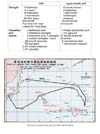
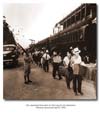
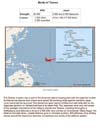
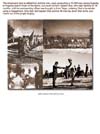
Actually he was only, officially institutionalizing the dramatic aggressive American westward expansion, beginning with the gentle annexation of Oregon with the Pacific harbours Seattle and Portland from Britain, and the conquest of 1.300.000 sq. km of Mexican national territory after a brutal war. This ended with Mexico ceding the present day California, Nevada, Utah, part of Colorado, Arizona, New Mexico, Wyoming and Texas, America paying Mexico 18 million $(about 450 million in todays dollars) or about half the amount the US had offered Mexico before the war.
In 1867 USA had purchased Alaska for $7.2 million from Imperial Russia, adding another 1.520.000 sq. km to US territory and geographically embracing the Pacific Ocean ready to future westward expansion eyeing the domination of China as final American industrial-political and strategical-naval goal. Crowning the intruding into the Pacific with the annexation of Hawaii and the Philippines the USA was now dominating the Pacific after the American- missionary backed overthrow of The Hawaiian Kingdom of Queen Lili'uokalani on January 17, 1893 and the US war with Spain by the end of the century.
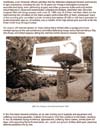
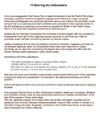
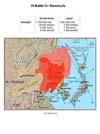
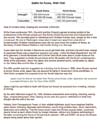
. . . quote from page 148:
Battle of Okinawa
At 1200 sq. km Okinawa is smaller than Kauai in Hawaii, and had a population of perhaps 500.000, no industry and no surplus food production or any other capability or activity to support the Japanese war effort except for a small production of commercial sugarcane- alcohol for torpedos and engines.
In late March 1945, the USA assembled a giant armada around Okinawa consisting of 1.300 ships, including more than 40 aircraft carriers, 18 battleships, 200 destroyers hundreds of various support ships including 365 amphibious vessels. The capital, Naha had already been totally destroyed on October 10, 1944 by Admiral Halsey's planes with 200 bombers devastating Okinawa's main population centers.
In seven days leading up to L-Day a massive amount of ordnance was fired including 37.000 rounds 5" shells, 33.000 rounds of 4.5" shells, 22.000 4" rockets from 117 rocket gunboats as well as 3.100 air strikes conducted on beach and in shore targets in what generally became known as tetsu no bofu or, typhoon of steel.
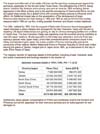
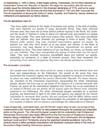
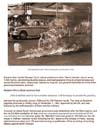
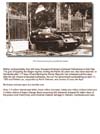
The Japanese HQ in Shuri was abandoned secretly, leaving small rear guard units, that kept the Americans at bay until the fall of Shuri on May 31. The US troops found it completely levelled and in ruins after 200.000 rounds of Naval and artillery gunfire, aerial bombings, the Japanese defence decimated with over 70.000 killed in action and only 9 POW's all wounded or unconscious.
There was only one kind of Japanese casualty ... the dead.
Unofficially, even American officers admitted that the defenders displayed heroism and bravery of epic proportions, including the 222 15-18 years old Himeyuri schoolgirls nursing the wounded and dying, even performing surgery and other gruesome duties enduring terrible circumstances in caves and overcrowded underground shelters, described later more like morgues filled with living corpses; until June 18, 1945 only 19 of them had been killed, but the next morning the US attack on the Ibara surgery centre killed 80% of them.
